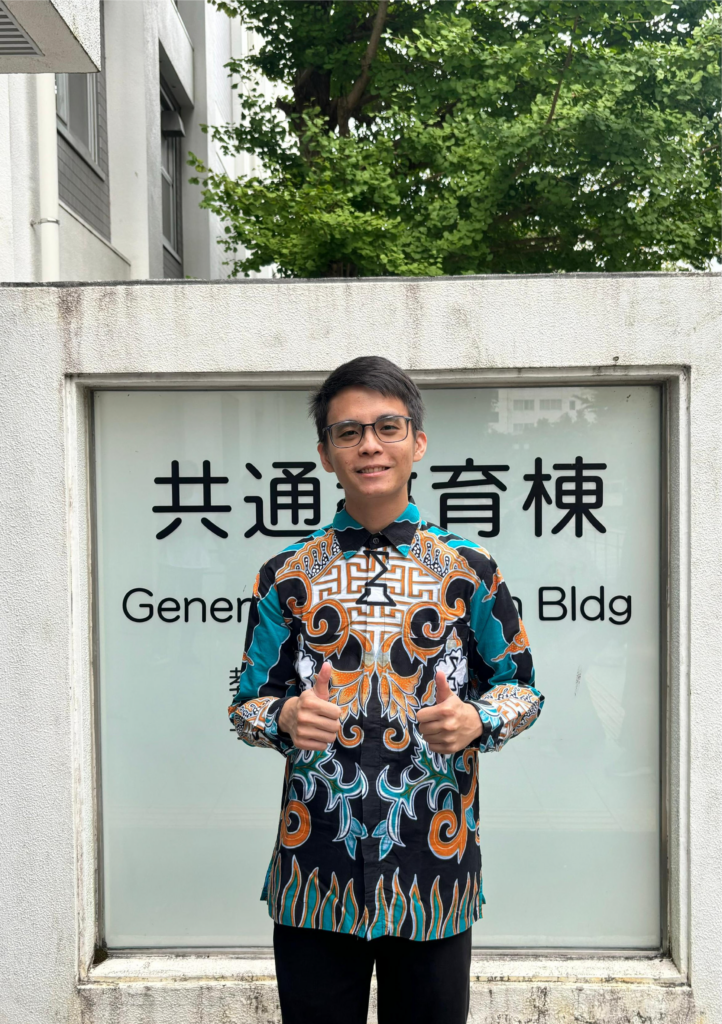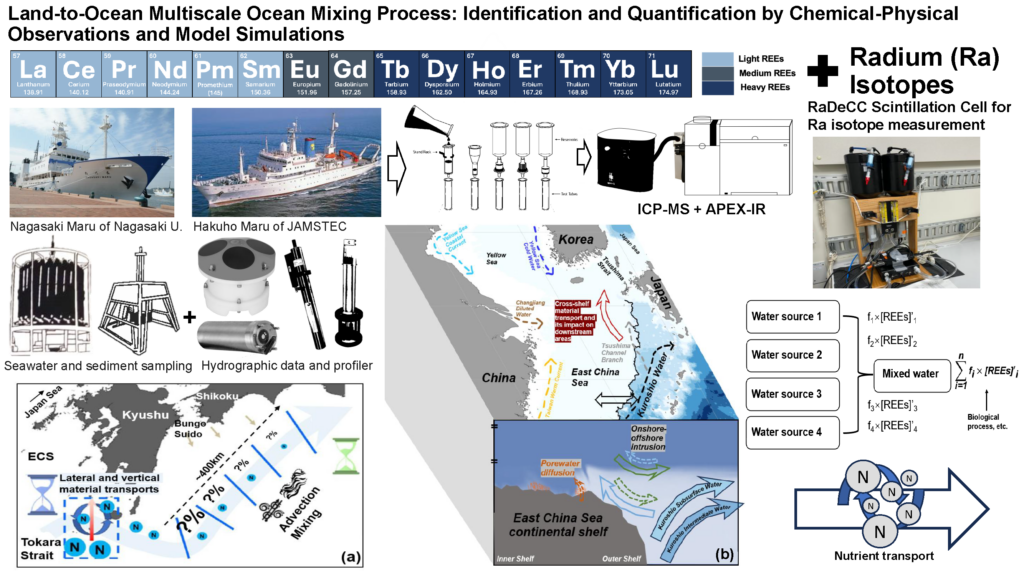自己紹介・研究目的
令和6年10月入学/ ■SPRING事業 採択学生紹介

サスティナブル地球環境学プログラム
令和6年10月 大学院入学
MICHAEL JULIAN HARYANTO
マイケル ジュリアン ハリヤント
陸から海洋へのマルチスケールの海洋混合プロセス:化学物理的観測とモデルシミュレーションによる同定と定量化
I am Michael Julian Haryanto, a doctoral student at the Graduate School of Science and Engineering, majoring in the Sustainable Global Environmental Studies Program under Prof. Jing ZHANG supervision. The ocean connects us regardless of the country's border and political stance. The ocean features a giant conveyor belt reflecting the importance of how water and materials are transported across the globe, passing through countries and potentially regulating climate and marine ecosystems along its pathway. Moreover, with the changing climate regionally and globally (episodic events), changes in water transport patterns could drive changes in material budget, potentially impacting marine ecology in the area.
My first topic is to analyze patterns of Kuroshio intrusion into the East China Sea (ECS) and its associated nutrient transport concerning diurnal variation and barotropic tidal interaction in the outer shelf. This topic will present a more comprehensive quantification process of how the interaction between the Kuroshio region, the ECS, and the Tsushima Strait facilitates material transport and local primary productivity. Additionally, instead of using a snap-shot type of water mass mixing analysis, understanding water dynamics on a temporal basis using Radium isotopes will help oceanographers evaluate the denaturation of water masses along the Kuroshio pathway (2nd topic). By incorporating Rare Earth Elements (REEs) and Radium isotopes, it is possible to clarify the mechanism and changing rate of water masses transported by the Kuroshio on a temporal basis. An Optimum Multiparameter Analysis (OMPA) mixing model will be constructed using REEs, potential temperature, and salinity to quantify water mixing contributions and associated nutrient transport. It is expected that multi-scale spatiotemporal investigations based on biochemical and physical observations and numerical simulation can evaluate the ecological impact of ocean mixing processes in ecologically essential nearshore areas around Japan (East China Sea, Kuroshio Region, Japan Sea, and Bungo Suido). Ultimately, this study will also involve interdisciplinary research of physical, chemical, and biological oceanographers, as well as ocean modelers.
My first topic is to analyze patterns of Kuroshio intrusion into the East China Sea (ECS) and its associated nutrient transport concerning diurnal variation and barotropic tidal interaction in the outer shelf. This topic will present a more comprehensive quantification process of how the interaction between the Kuroshio region, the ECS, and the Tsushima Strait facilitates material transport and local primary productivity. Additionally, instead of using a snap-shot type of water mass mixing analysis, understanding water dynamics on a temporal basis using Radium isotopes will help oceanographers evaluate the denaturation of water masses along the Kuroshio pathway (2nd topic). By incorporating Rare Earth Elements (REEs) and Radium isotopes, it is possible to clarify the mechanism and changing rate of water masses transported by the Kuroshio on a temporal basis. An Optimum Multiparameter Analysis (OMPA) mixing model will be constructed using REEs, potential temperature, and salinity to quantify water mixing contributions and associated nutrient transport. It is expected that multi-scale spatiotemporal investigations based on biochemical and physical observations and numerical simulation can evaluate the ecological impact of ocean mixing processes in ecologically essential nearshore areas around Japan (East China Sea, Kuroshio Region, Japan Sea, and Bungo Suido). Ultimately, this study will also involve interdisciplinary research of physical, chemical, and biological oceanographers, as well as ocean modelers.


